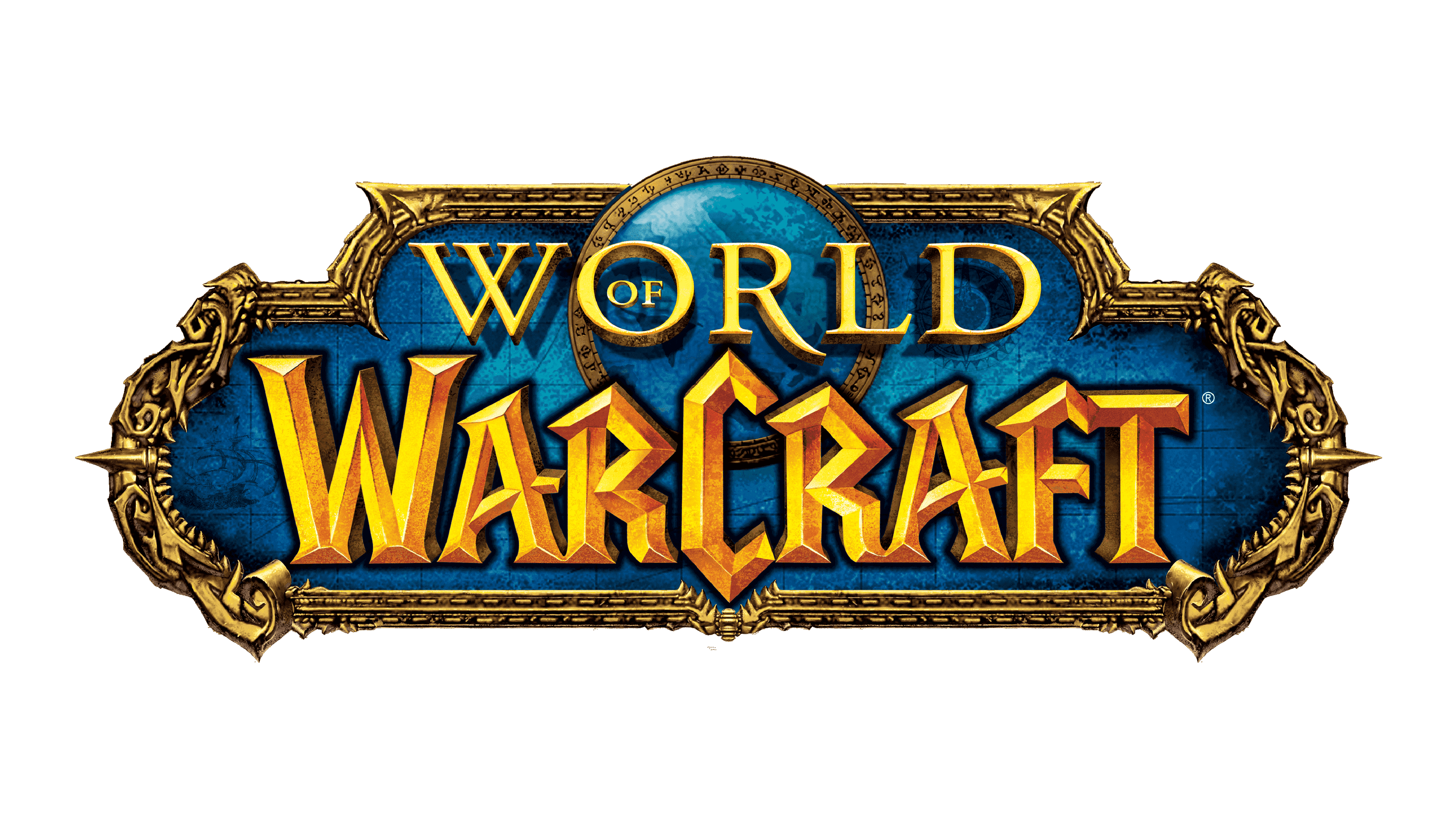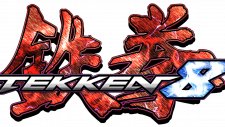World of Warcraft Logo
“World of Warcraft” (WoW) is a renowned massively multiplayer online role-playing game (MMORPG) set in a vibrant fantasy universe. Launched by Blizzard Entertainment in 2004, it invites players into the mythical world of Azeroth. The game’s core revolves around character creation, where players choose from various races and classes, crafting unique avatars. Players embark on quests, explore sprawling landscapes, battle monsters, and interact with other players, fostering a vast community. WoW is known for its expansive lore, dynamic player-versus-player combat, and regular updates including expansions that further enrich its storyline and gameplay. This virtual world captivates with its mix of strategy, teamwork, and imaginative escapism.
Meaning and history
“World of Warcraft” (WoW), a masterpiece by Blizzard Entertainment since 2004, redefined online gaming in the fantasy realm. In Azeroth, a world with a rich tapestry of stories, players align with either the noble Alliance or the mighty Horde, each offering distinct races and classes. Initially, WoW’s plot unfolds in the shadow of the Third War’s end, highlighting the tense détente between these factions.
The expansion odyssey began with “The Burning Crusade” (2007), taking adventurers to the shattered Outland, with narratives woven around demonic forces and redemption quests. Next, “Wrath of the Lich King” (2008) led players to Northrend’s frozen wastes, to face the enigmatic Lich King, a cornerstone of Warcraft’s mythology. “Cataclysm” (2010) redefined the game’s landscape, echoing the devastation caused by the dragon Deathwing.
In “Mists of Pandaria” (2012), the enigmatic Pandaria emerged, focusing on cultural richness and exploration. “Warlords of Draenor” (2014) presented a time-twisted Draenor, home of the orcs, inviting players to untangle its alternate history. The “Legion” (2016) expansion saw the resurgence of the notorious Burning Legion, leading to monumental confrontations and deep lore exploration.
“Battle for Azeroth” (2018) reignited ancient factional flames, emphasizing pride and conquest. The latest chapter, “Shadowlands” (2020), ventured into death’s domains, presenting new existential narratives.
WoW’s story is a constantly evolving tapestry, rich in mythology, legendary figures, and intricate political undercurrents. Its ability to blend captivating storytelling with engaging gameplay and a robust community keeps its narrative fresh and its players deeply engaged in Azeroth’s ever-evolving chronicle.
What is World of Warcraft?
“World of Warcraft,” often abbreviated as WoW, is a groundbreaking massively multiplayer online role-playing game (MMORPG) created by Blizzard Entertainment. Launched in 2004, it immerses players in the mythical world of Azeroth, where they embark on epic quests, forge alliances, and engage in battles against a backdrop of rich lore and dynamic world events. WoW stands as a cornerstone of online gaming, renowned for its vibrant community and ever-evolving narrative.
2001 – 2007
The logo for “World of Warcraft” features an ornate, gothic style emblem, combining a sense of medieval fantasy with epic storytelling. Encased in an intricate, dark blue border with baroque embellishments, the logo’s background evokes an ancient tome or a mysterious portal. At the center, a polished, silver-hued globe underscores the game’s global community and the vastness of the world it offers. The game’s title is emblazoned in a striking, golden font, with the “World of” arching above and “Warcraft” below, both exhibiting sharp, serpentine flourishes that suggest a mystical and adventurous essence. The colors chosen—deep blues, metallic silvers, and fiery golds—convey the richness and depth of the in-game universe. Overall, the logo is designed to transport viewers to a realm of high fantasy and grandiose quests.
2002 – 2003
In this iteration of the “World of Warcraft” logo, the central globe takes on a more pronounced metallic sheen, suggesting a mirror to the game’s multifaceted universe. The “of” between “World” and “Warcraft” is notably more prominent, bridging the two main words with increased visual weight, hinting at the significance of the connection between the world and the warcraft within it. The golden hues of the lettering are deeper, richer, and the shadowing more pronounced, adding a three-dimensional effect that makes the title seem to leap forward, inviting potential adventurers into the realm of Azeroth. The dark blue of the background is now textured, giving the impression of a mystical night sky filled with unseen potential.
2003 – 2004
This rendition of the “World of Warcraft” logo maintains its iconic structure while introducing subtle enhancements. The texturing within the golden lettering has been refined, suggesting an even greater depth and a more intricate play of light and shadow, which gives the text a more pronounced embossed appearance. The globe centered in the logo now exhibits a more detailed surface, with subtle hints of Azeroth’s topography, signaling the expansive nature of the game’s environment. The filigree surrounding the logo’s border is crisper, hinting at a world where every detail is crafted with precision, reflecting the game’s commitment to a fully-realized fantasy experience.
2004 – Today
In this updated logo, the “World of Warcraft” title bursts with a more vivid color palette, particularly within the lettering, which transitions from a golden yellow to a deep orange, conveying a fiery energy. The background now sports a rich cerulean blue, enhancing the sense of depth and contrasting sharply with the golden text, which now includes a registered trademark symbol, showcasing its established brand status. The globe at the center is crisper, with more pronounced azure hues and subtle design patterns, suggesting a world ripe for exploration and adventure. The ornate border detailing retains its intricate design but with added sharpness and brightness, underscoring the game’s fantasy and craftsmanship.
2007 – 2008
The logo has transitioned to a new expansion, “The Burning Crusade,” evident in the verdant green backdrop that replaces the previous blue, symbolizing the expansion’s fresh, uncharted territories. The lettering of “World of Warcraft” retains its bold, golden outline but is filled with a fiery gradient, reflecting the expansion’s intense, conflict-ridden themes. Beneath it, “The Burning Crusade” is introduced in a menacing, jagged font, highlighted with a smoldering ember effect, hinting at the fiery battles ahead. The globe at the center now fades into the background, giving prominence to the expansion’s title, which is underscored by a tribal-like design, suggestive of the new adventures and cultures awaiting players. The overall design maintains the ornate frame but shifts focus to the fiery new content that “The Burning Crusade” promises.
2008 – 2010
In this logo for “World of Warcraft: Wrath of the Lich King,” a chilling transformation is evident. The once fiery palette shifts to icy blues and frosted edges, mirroring the expansion’s frostbitten realm of Northrend. “Wrath of the Lich King” unfurls below the main title in a frigid font, as if carved from ice, hinting at the cold, ruthless nature of the Lich King himself. Icicles hang from the lettering, emphasizing the harsh, wintry conditions awaiting players. The globe in the center, previously a symbol of unity, now seems enveloped by a creeping frost, signifying the encroaching threat of the undead scourge. The overall design retains the ornamental intricacy but is now overlaid with a wintry motif, encapsulating the frozen heart of this dark chapter in Azeroth’s saga.
2010 – 2012
The logo for “World of Warcraft: Cataclysm” brings a seismic shift in visual identity, mirroring the expansion’s theme of world-shattering change. The previously icy motif has melted away, replaced by molten golds and deep, earthen browns that evoke a world under fiery transformation. Cracks and fissures mar the globe’s surface, symbolizing Azeroth’s fractured landscape post-Cataclysm. The word “Cataclysm” itself, emblazoned below the main title, crackles with the same energy as the fractured earth, its letters seeming to have been forged in lava and cooled to a dark, ominous gold. This design encapsulates the chaos and rebirth that the expansion represents, with its design elements suggesting a phoenix rising from the ashes of a world undone.
2012 – 2014
The logo for “World of Warcraft: Mists of Pandaria” presents a serene yet enigmatic shift, reflecting the expansion’s Asian-inspired theme. The turbulent, fiery hues of “Cataclysm” are replaced with the tranquil greens and golds, signifying a return to a more natural and mystical environment. The introduction of “Mists of Pandaria” in an earthy, parchment-like font below the main title contrasts with the sharp, molten appearance of the previous expansion, suggesting an ancient scroll or a hidden lore yet to be uncovered. The globe, now a jade-like orb, exudes the mystery of the new continent, Pandaria, while the dragon motif entwining the frame gives a nod to the expansion’s new race, the Pandaren. This logo encapsulates the tranquil yet adventurous spirit of discovery that defines the “Mists of Pandaria” expansion.
2014 – 2015
The “World of Warcraft: Warlords of Draenor” logo ushers in a more primal and warlike aesthetic, a stark departure from the serene greens of “Mists of Pandaria.” The logo is now overlaid on a backdrop resembling weathered wood, echoing the savage lands of Draenor. Encasing the title, metallic spikes and bands suggest fortification and warfare, resonating with the expansion’s focus on the might of the Draenor warlords. The deep, earthy tones and the globe’s darkened, war-torn appearance reflect the harsh, unforgiving world that players are invited to conquer. The subtitle “Warlords of Draenor” is presented in a rugged stone-like texture, further emphasizing the raw, untamed challenges that await in this chapter of the saga. This logo captures the essence of a return to the brutal roots of the Warcraft universe.
2016 – 2017
The “World of Warcraft: Legion” logo is infused with a sinister fel green, representing the demonic invasion that defines this expansion. Cracks of dark energy emanate from the lettering, suggesting corruption spreading across Azeroth. The font for “Legion” appears jagged and aggressive, much like the expansion’s antagonists, and is underlined by a sharp, blade-like embellishment, reinforcing the sense of threat and conflict. This design captures the expansion’s central theme of an all-out war against the Burning Legion, with Azeroth’s fate hanging in the balance.
2018 – 2020
“World of Warcraft: Battle for Azeroth” ushers in a nautical theme, as seen in the deep oceanic blues of the logo’s background, evoking the maritime explorations of the expansion. The stony texture of the main title “World of Warcraft” contrasts with the metallic sheen from “Warlords of Draenor,” symbolizing the hardened front of warring factions. Below, “Battle for Azeroth” is etched into a metal-like plaque, connoting a memorial for the epic conflict it represents. The ornamental border now boasts a brighter gold, akin to polished brass on a ship’s trim, aligning with the seafaring journey players undertake. This logo captures the essence of alliance and horde forces clashing over the fate of their shared home, Azeroth.
2020 – 2022
The logo for “World of Warcraft: Shadowlands” takes on a spectral and otherworldly ambiance, a stark contrast to the maritime fervor of “Battle for Azeroth.” The ethereal white and misty backdrop symbolizes the expansion’s exploration of the afterlife and realms beyond the living. The main title now appears as if it’s carved from ancient stone, resonating with the mysterious and ancient lands players traverse in the Shadowlands. Below, the “Shadowlands” inscription is jagged, resembling chiseled rock, which suggests the perilous and untamed nature of the new zones. The golden elements that once shone brightly are subdued, edged with a ghostly patina, reflecting the theme of death and rebirth. This design encapsulates the ominous journey into the unknown that lies at the heart of the Shadowlands expansion.
2022 – 2024
The “World of Warcraft: Dragonflight” logo introduces a dynamic departure from “Shadowlands,” marked by wing-like elements that evoke the grandeur of dragons. The central orb, now a vibrant sapphire, suggests the mystical power of dragonkind central to the expansion’s narrative. The font of “World of Warcraft” is silver and angular, reminiscent of dragon scales, which contrasts with the ethereal white of “Shadowlands.” The subtitle “Dragonflight” is forged in a style that mirrors the sharpness of dragon claws, imbuing the logo with a sense of ancient strength and majesty. This design captures the expansion’s soaring theme, inviting players to the skies of Azeroth on dragonback.
























